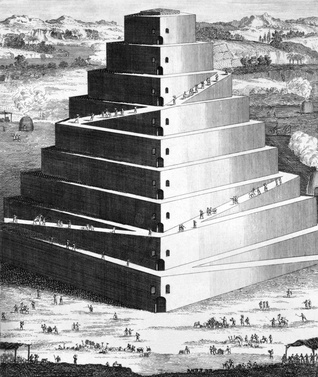The main city of ancient Sumer was Uruk. It’s center was the great Ziggurat. It’s ruler was both a religious and political ruler called an En. The religion had an extreme hierarchy of priests, stone masons and bureaucrats. The tradesman were the middle class with the peasants being at the bottom. Religion and state were not separated and every member of the community was seen as being part of the temple despite the Hierarchy(Fagan: People of the Earth:1989:403). A comparison may be made with this and the Roman Catholic Church. Because like the Church community members of any class did show homage, but the priests performed the rituals.
In Egypt religion was very different. There was a great distinction between official and private religion. The unification of Egypt brought about elevation of many of the gods to official state worshiped gods for example, when Hierakonpolisians conquered Lower Egypt they made Horus the local god into the great state god who was worshiped at Memphis(James: An Introduction to Ancient Egypt:1979:131). For political reasons local gods that did not become elevated were never disposed of. They were amalgamated to form the Pantheon on Egypt and to keep unity of local religious centers resulting the use throughout Egypt of the divine Triad system(James: 1979: 131). In this system two local gods became a family with the great state god.
Egyptian religion had it’s many temples that must have inspired a sense of wonder among ordinary serfs and peasants but these temples unlike the ones of Mesopotamia had little affect on the faith of the commoner(James:1978:133).
In the Old Kingdom Horus and Re were the chief state gods. In the Middle Kingdom an obscure god named Amun became into being from the area of Thebes. He became the great God of all the land of Egypt in the New Kingdom and was claimed to be the driving force which removed the Hyksos, putting Egyptians back in control of their country for the New Kingdom. By this time Egyptian religion had become very complex with secondary cults. Many of these appeared around the royal mortuary temples in Thebes and were for the common people. Also famous men and women after their deaths were frequently worshiped by commoners. An example of this is Imhotep, a physician and sage of the Late Period. Also, Asian gods like Anat, Astarte and Qadesh were of particular appeal to commoners. These gods were introduced by Egyptian soldiers returning form wars in Asia. The ordinary person’s practice of religion was mainly in the form of ornaments representing particular gods. For example, in the New Kingdom the goddess Meresger protected individuals against snakes if one wore a “Meresger-like” carved amulet around the neck(James:1979:35). Thus private religion consisted mostly of calling on local deities, wearing their images and reciting prayers to gain protection and desired ends. It appeared to be separate from state religion unlike Mesopotamian religion where the average individual did belong to the temples.
